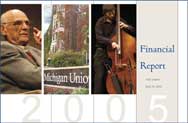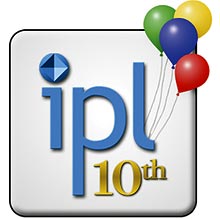

In December 2004, Google Inc. and U-M announced an initiative to digitize the bound print volumes of the University Library. The landmark agreement represents a major change in the way library resources are accessed.
U-M alumnus Larry Page, president and co-founder of Google, is credited with first approaching the University with the idea. The digitized collection will offer scholars and the general public an unprecedented ability to search for and locate items from the University’s vast collection. Online search results will point to the library book and to information on how to buy or borrow a copy. Researchers will be able to browse the entire text of public domain books. Material under copyright, however, will yield only a few sentences, not the full text.
As part of the agreement with Google, the U-M will receive a digital copy of each volume. The University Library will use these copies to create a digital archive that preserves Michigan’s remarkable print collection for future generations. It will take approximately six years to convert the U-M University Library collections.
In June, the Sakai Educational Partners Program (SEPP) showed its strength by gathering 450 participants in a conference in Baltimore, doubling the previous year’s attendance. Why the increase? Because SEPP is currently one of the most important experiments in the development of higher education software.
Working together, universities, including U-M, which has been a leader in the project, are building innovative programs to merge course tools with research tools, effectively bringing the classroom and the lab together into one software package. The challenge is to make the software work on any campus, anywhere in the world. The open-source software is already successfully in production in Ann Arbor and at Indiana University. Seventy other educational institutions belong to SEPP, and IBM joined this year as a commercial affiliate.
The Grant Opportunities/Collaborative Spaces (GROCS) Program awarded its first grants in 2005. The GROCS program provides collaborative space, equipment, and funding for student-initiated research, supporting student teams that use rich media in collaborative academic projects. The program is an experimental project of the Digital Media Commons, in the Duderstadt Center on North Campus.
GROCS is rare among campus grant opportunities in that it relies on students to imagine the projects, gather the team members, solicit a faculty advisor, and arrange with the advisor for course credit. Teams typically include two to four students and one faculty member or graduate student instructor.
GROCS 2005 projects include:
 When School of Information (SI) students set out to build “the first public library of the Internet” in 1995, they wondered if anyone would notice. They needn’t have worried. Ten years later, the Internet Public Library (IPL) logs more than seven million patron visits a year from virtually every country. It has grown into an unparalleled resource for students, researchers, and librarians, and is a premier training ground for tomorrow’s digital librarians.
When School of Information (SI) students set out to build “the first public library of the Internet” in 1995, they wondered if anyone would notice. They needn’t have worried. Ten years later, the Internet Public Library (IPL) logs more than seven million patron visits a year from virtually every country. It has grown into an unparalleled resource for students, researchers, and librarians, and is a premier training ground for tomorrow’s digital librarians.
Over the years, SI students have built a vast storehouse of carefully selected online resources for children and adults. Some “exhibits,” such as the popular Presidents of the United States (POTUS), are used daily by K–12 students and teachers. The School of Information offers a course devoted to operating and improving the IPL that also serves as a learning and research laboratory for digital librarianship.